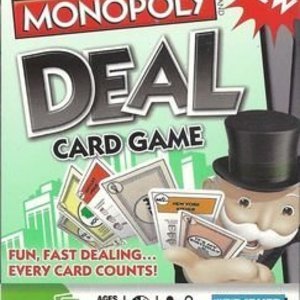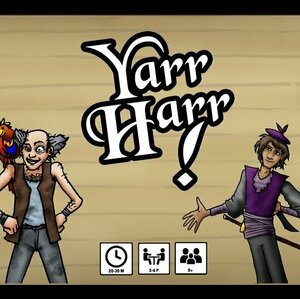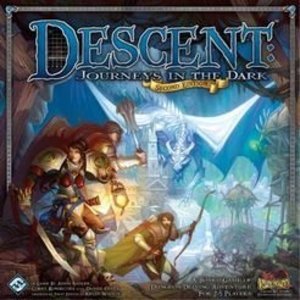
hip hop hen: phonics 1 CVC
Education and Games
App
PHONICS APPS CREATED BY TEACHERS in the UK We are very excited to bring to you: “phonics 1 CVC”....

East-Commerce: China, E-Commerce and the Internet of Things
Book
A New E-Commerce Model is Coming from the East it is More Advanced and it is Spreading Worldwide...
Purple Phoenix Games (2266 KP) rated Monopoly Deal Card Game in Tabletop Games
Jul 1, 2020
Monopoly Deal is a game of hand management, set collection, and take that as players are trying to collect 3 complete property sets. Setup is simple – shuffle the deck of cards and deal 5 to each player, put the remaining cards in a draw pile, and determine the starting player. On your turn, you will complete 3 steps: draw 2 cards, play up to 3 cards, and discard your hand down to 7 cards if necessary. Play then continues clockwise to the next player. There are 3 different ways in which you can play your cards. You can play money into your bank, add properties to your collection, or play action cards to the center of the table. Action cards allow you to do things like charge opponents rent or draw additional cards. The game ends once a player has completed 3 complete property sets. Be the first to do so, and you are the winner!
I know you’re dying to get to the point – is this card game any good? I do have to admit that it has its good points. The game is easy to learn and fast to play. One of the worst parts of the board game version is that it feels like it takes an eternity to play. As a card game, the flow is faster and that makes it more engaging for all players the entire time. The rules are simple and clear, and there is no ambiguity as to how different cards work. Don’t want a property? Just don’t play it! There’s no need to send it to auction like in the board game, just discard it when you get a chance. This card game version simplifies the board game in a way that makes it enjoyable.
The biggest downside for me regarding Monopoly Deal is that this game is based mostly on the luck of the draw. It is very difficult to create a strategy because you are at the mercy of your hand of cards. No matter how hard you try, or how adept you are at strategy games, if the deck of cards is working against you, it is very difficult to bounce back. Another part of this game that I do not like is the take that aspect. I’ve said it before, I do not enjoy direct confrontation in games. I can be pretty competitive and I begin to take things personally, which makes the game fun for nobody. This game can get pretty cutthroat, and because of the large luck element, it can feel unbalanced and unfair. Parts of it feel kind of Munchkin-y to me, and it brings down my enjoyment factor.
For such a light and luck-based game, Monopoly Deal really has a little more to it than meets the eye. Is it better than the board game version? In my opinion, yes. I would much rather play the card game than the board game. That being said, I reserve this game more for a filler game or an introductory game for newer gamers – it’s not one that I am dying to pull out at every opportunity. Should you give it a try? That’s ultimately up to you, but I think you might be surprised with this game. Overall, Purple Phoenix Games gives Monopoly Deal a 6 / 12.
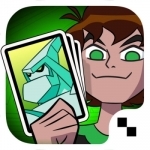
Ben 10 Slammers – Galactic Alien Collectible Card Battle Game
Games and Entertainment
App
Collect, upgrade and unleash your aliens in a massive BEN 10 COLLECTIBLE CARD BATTLE! Play through a...
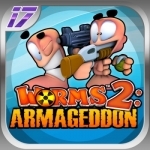
Worms 2: Armageddon
Games and Entertainment
App
#1 Turn-Based Game in 135 countries - #1 Strategy Game in 100+ countries #1 Game overall 35+...
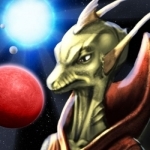
Starbase Orion
Games
App
"The best 4X game currently available for mobile" - PocketTactics.com "This one is geek heaven" -...

Get The Bet - Football betting predictive analysis, a Quantitative Approach. Deep Learning at its best
Sports and Entertainment
App
Welcome to the new era of SPORTS BETTING: Get unlimited Match Predictions for over 200 international...
Purple Phoenix Games (2266 KP) rated Dinosaur Island in Tabletop Games
Jun 12, 2019
In Dinosaur Island, you have successfully created a theme park of the Jurassic variety (see what I did there?), and are now tasked with managing and supervising the day-to-day operations. Think “Zoo Tycoon” on steroids. You have to collect new DNA, upgrade your facilities, build new attractions, hire specialists, oversee your workers, and create new dinosaurs to populate your park! Make sure you manage your resources wisely for maximum benefit, and keep a close eye on the security of your park to ensure the safety of your guests! The goal is to create and maintain the most successful dinosaur park!
DISCLAIMER: An expansion exists for Dinosaur Island, and I do own it, but I have yet to incorporate it into my games. Once I get some experience with the expansion, I will either amend this review or address it in a separate post! -L
Let me first begin this review by saying that there is A LOT going on in this game. Seriously, a lot. And it can be pretty overwhelming at first. But one thing I cannot praise enough about Dinosaur Island is its rulebook. It’s kind of hefty, but it is so detailed and clear (with numerous examples) that I understood how to play the game on my first read-through. And sometimes with games that have so many moving elements, total understanding from the get-go can be rare, for me especially. The excellent rulebook makes a seemingly daunting game not so scary. I always keep the rulebook on hand when I play (just to be safe!), but once I got the hang of all of the steps, I don’t really need to refer back to it anymore!
As a solo game, Dinosaur Island plays very similarly as it does in group play with a few minor differences. For one, no regular Objective cards are used – instead you use a set of specified Solo Objective cards. Next, to simulate player interaction during the Research and Market Phases, the solo player draws a card from an AI deck and eliminates the options/discards the resources listed on the card – this mimics group play in the sense that turn order changes every round and you do not always get your first pick during these phases. The remaining 2 Phases (Worker and Park) occur simultaneously and involve no player interaction, so those are played as normal. One final difference between group and solo play is that the solo player can choose to play without Plot Twist cards. A solo game is played over the course of 7 total rounds, and the overall goal of the game remains the same – amass the most Victory Points.
The trickiest part of playing Dinosaur Island solo, for me, has to do with the Solo Objectives. You have 7 Solo Objectives to be completed throughout the game, and they reward Victory Points based on the round in which they were completed – finishing objectives in earlier rounds yields a higher number of points. If you are unable to complete any objective in a given round, you must discard one (of your choice) at the end of that round. The hard thing is that depending on which objectives are currently in play, it can be difficult to complete one each round to earn those points. Some things take time (and a couple of rounds) to be able to complete – like “Reach a threat level of 15.” If you have multiple long-term objectives in play, they can really limit the number of points you can earn from them. A nice mix of objectives (both short-term and long-term) can help balance out the game a little more, but it’s ultimately a luck of the draw.
One positive thing I can say about the objectives, though, is that they really force you to come up with a multi-faceted strategy. Depending on which objectives are in play, you have to decide on a logical strategy and order in which to complete them for maximum points. You can’t just focus on one objective – you also need to be setting yourself up to complete future objectives. I never feel like I’m just going through the motions because I always need to be thinking ahead to my future rounds.
The thing I really like about Dinosaur Island as a solo game is that it is still extremely engaging. I’m not a huge fan of “Beat your own personal best” solo games, but this one keeps me so involved that I don’t mind the fact that there’s no real ‘winner.’ Since a group game doesn’t involve that much player interaction anyway, Dinosaur Island doesn’t really even necessarily feel like a solo game. Every play requires a different strategy, and that makes it feel like a new game every time. If you enjoy Dinosaur Island in a group setting, give it a try as a solo game. There’s really not much of a gameplay difference, and I think you’ll enjoy it just as much!
https://purplephoenixgames.wordpress.com/2019/05/21/solo-chronicles-dinosaur-island/
Purple Phoenix Games (2266 KP) rated Yarr Harr! in Tabletop Games
Jul 2, 2020
Disclaimer: We were provided a copy of Yarr Harr! for the purposes of this preview. The final components of the upcoming Kickstarter campaign might vary slightly from those pictured below. Also, our copy had some extra cards/content that will be available as Stretch Goals during the campaign. -L
Yarr Harr! is a competitive card game in which players are building up their individual pirate ships and trying to amass the most Doubloons by the end of the game. The gameplay itself is pretty simple, but actually winning takes more strategy than you might think. To setup the game, every player receives a Bow and Stern card for their Harbor (play area), and a starting hand with 5 cards. The remaining cards form the Draw deck for the game, and is placed in the center of the play area. On your turn, you will draw 2 cards from the Draw deck, and then play up to 3 cards. There are 2 different types of cards that can be played: Ship cards and Action cards. Ship cards, played between your own Bow and Stern cards, are used to build up your ship and score points at the end of the game. Action cards are used to sabotage opponents or to give yourself a buff. You may not play more than 2 Ship cards in one turn, and you may only have a maximum of 8 cards in your hand at the end of your turn. Play continues as such, until the end-game requirement has been met. That requirement depends on the number of players in the game, and tells you how many Ship cards must be in your own Harbor for the game to end. As soon as any 1 player achieves that number, the game ends. Players then tally up all of the Doubloon points on the Ship cards in their Harbor, subtracting any negative points from Action cards affecting their ship, and the player with the most Doubloons wins!
The thing that I like about Yarr Harr! the most is that it can be played with differing levels of strategy. The game comes with a number of Captain cards and Objective cards that are optional to use in play. To include Captain cards, each player receives 1 Captain card at the start of the game, which grants special abilities throughout the game, depending on the given Captain. To play with Objective cards, each player receives 3 Objective cards at the start of the game, and then selects 2 to keep for play. Objectives are kept secret from your opponents, and will earn you end-game Doubloons upon completing them. With these optional modes of play, you can really cater the strategic level to that of your current game group. You can play with younger gamers with no extra content, just the base game as described above. If you are looking to turn this into a possibly more difficult game, add in those Captain and Objective cards. Offering those optional elements is a huge plus because it makes Yarr Harr! accessible to more gamers. So that’s a big win to me.
The other thing that I really like about Yarr Harr! is that the gameplay is pretty light and fast. It is easy to teach, learn, and play, thus lending itself to lots of gaming situations. Need something quick to play before dinner is ready? Yarr Harr! Want to pick the pace back up after a long, brain-burning game at game night? Yarr Harr! It can fit in wherever you want, and because of that, I can see myself bringing it to the table often. The only warning I have for this game is that, since it is competitive, more sensitive gamers might not find it enjoyable. There are Action cards to be played to directly sabotage and inhibit your opponents, and sometimes that can feel like personal attacks against a player. To alleviate that, I recommend playing at higher player counts, so it doesn’t feel like players are ganging up on a single player. Just something to be aware of! Let’s talk components. This is a card game, and the quality of the cards we received was pretty good. They are nice and sturdy, and could hold up for many plays. The artwork is thematic, creative, colorful, and just enjoyable to look at overall.
All in all, I think Yarr Harr! is a fast and fun game for any type of gamer. The varying degrees of difficulty and strategy make it a versatile game, and I really appreciate that aspect. It is a competitive game, but it feels more light-hearted than cutthroat and that helps keep it enjoyable for all players. If you’re looking for something fun, yet strategic, and easy to play, look no further than Yarr Harr! The Kickstarter campaign begins on June 23rd, so be on the lookout for this awesome little card game!
Paul Kellett (118 KP) rated Descent: Journeys in the Dark (Second Edition) in Tabletop Games
May 4, 2019
With a couple of big-box and half a dozen small-box expansions, not to mention the various hero & monster packs, there is a ton of stuff available and if you own everything, you will be able to choose from 72 heroes with 22 different class decks; fight against 45 different monster types, and encounter around 15 lieutenants over a total of 182 different scenarios. That's plenty to keep you quiet for a while.
So many cards...
Descent: An Overview In The Dark
Descent is a scenario-based game where you work through a tree of different missions, choosing the next one based on whether the heroes or the Overlord worn the last. Each scenario will have specific objectives - anything from stealing an item and reaching the exit to interrogating prisoners and defeating a fearsome Lieutenant of the Overlord. Some of the monsters to be encountered are specified in the scenario text with other free groups able to be chosen from traits specific to that scenario. This gives some variety meaning you will never face exactly the same monsters if you replay the scenarios.
The good players choose a hero from the stack of basic skill types - Fighter, Healer, Scout or Mage and then choose from one of the many class decks for each type so the Fighter could be a Knight or a Berzerker, the Mage a Necromancer and the Healer a Bard, etc. These decks give each hero their skills and form their general strategy.
Meanwhile, the Overlord player chooses one of two Basic decks of cards that will form the base of his defence against the heroes. One deck is more about springing traps while the other has more things to enhance monster attacks. After choosing the basic deck, the Overlord can choose a specialist deck. These can be used to fine tune the Overlord's strategy and at first, only one card is available, the others will be purchased with experience points after each scenario. Finally, if the relevant expansion packs are available, the Overlord can choose a Lieutenant deck which adds further depth to his strategy and also offers the chance to bring a powerful figure into play later in the campaign.
Solo? How So? Redjak has the answer.
With all that going on, it sounds like a fairly daunting if not impossible task to play a solo game of Descent but a fan going by the name of Redjak created two card-driven AI decks - Redjak's Automated Monster Variant (RAMV) and Redjak's Automated Overlord Variant (RAOV). These decks both allow a player, or group of players to play the game as a fully co-operative experience with the cards replacing the Overlord player.
I will say that it is preferable if you have a grasp of the basic rules before jumping into these variants as there can be a lot going on if you are trying to learn the game and the solo rules at the same time. It's probably best to only choose two heroes at first as playing four heroes is more involved but ultimately more rewarding.
These variants are available to download and print out and are also available from the Printer Studio website if you search, although if you are not in the US, then shipping gets expensive.
RAMV
The Monster AI deck is the simpler of the two AI's, being just concerned with the monster actions and leaving out all the Overlord's cards. I haven't played much with this variant but the rules are fairly straightforward. You will set up 4 decks - an Event deck, a Dark Influence deck, a Conditions deck and a Monster deck.
After choosing a scenario to play, you draw cards from the Monster deck, finding ones with icons matching those of the current scenario. This keeps things random and you will always have different things to fight. The selected monster groups will then be placed in "Teams" underneath a row of team cards that will give them their activation order. Finally you will place the encounter objective card for the current scenario. This will give you specific things for each monster group to focus on in terms of stopping you from winning.
You will take your turn alternating hero and monster groups, drawing cards at various points when the monsters should react to attacks, certain scenario triggers ond other in-game events.
It is a fairly simple system but it works really well, giving a solid, straightforward dungeon crawl feel of exploring a map and fighting monsters while trying to complete your quest. Definitely a good starting point and good if you want a 'quick' dungeon crawl.
RAOV
This is the meat, the full experience. Although daunting at first, if you are familiar with the game rules (and have possibly played RAMV a bit), then it will make sense once you get stuck in.
RAOV differs over RAMV in only having one deck, but the rule book is more in depth describing how everything gets played.
You set up as normal, decide on what decks the Overlord will be playing with, draw his starting hand of cards placing them face up on the table. (This variant uses D10 dice anytime you have to make selections)
and take all your heroes actions. If at any point one of your actions would trigger an Overlord card, then that card is played and discarded. Having an open hand means that there are fewer surprises and the Overlord cant be as evil as a human player would be, but it is still tricky and knowing what cards might trigger forces you to think about your strategy in a different way.
Once the heroes have all activated, then the Overlord take its turn, playing any cards that would trigger at the start of the turn. Then, you flip over the top card of the AI deck and activate the first monster group. These cards have a primary target, shown by the corresponding hero symbol and several secondary targets. This gives the monster a focus for its actions. The main text of the card is a list of actions and essentially you work down the list doing whatever actions you are able. Each monster that activates will draw a new card and follow it's orders.
That in a nutshell is it. The Overlord's cards will trigger at the first available opportunity and the monsters will follow a list of options. Once you get used to it, it flows really well and doesn't feel too fiddly at all.
An Open Dungeon
As well as the two AI variants, Redjak also created Delven Deep - a deck of cards each displaying a different map tile that you can use to play a completely randomly generated dungeon crawl. I have yet to try this out, but it is another option if you don't fancy playing through a scripted scenario and just want to explore a random map, killing things.
For The Digital Generation
Fantasy Flight Games have also released an official, free companion app on Android, Steam and IOS that will take control of the Overlord player. This app comes with, I think 2 campaigns - a short training story and a larger, full campaign. Other campaigns a random dungeon generator are available to purchase in the app. None of the printed scenarios are playable using this app and it doesn't use any of the overlord cards, plot decks, event cards or encounter cards.
I will say that I am not a fan of apps for board games and it was actually this app in particular that soured me on the whole idea. Many people really enjoy this app and it has breathed a new lease of life into the game, but unfortunately on my first playthrough, it decided to crash near to the end of a campaign and I essentially lost 6 hours of gaming. I would have had to start all over again from the beginning. That was not a fun experience and put me off completely.
The app borrows heavily from Redjak's work, giving you a list of options to work through when activating the monsters, and various other triggers. Unlike the printed scenarios, all the maps in the digital stories are hidden until you explore them, so you never know what you will encounter. Also, there is a hidden timer in the program that means if you take too long exploring, fighting or whatever, then the game will start throwing nastier and nastier events at you. This makes the game much more of a race than its cardboard cousin and ramps up the difficulty at a fast pace making you feel like you never have enough time to do what you want.
In My opinion, RAOV is the best way to play Descent solo. It uses absolutely everything in the box and gives the most realistic feeling of playing the complete game.
